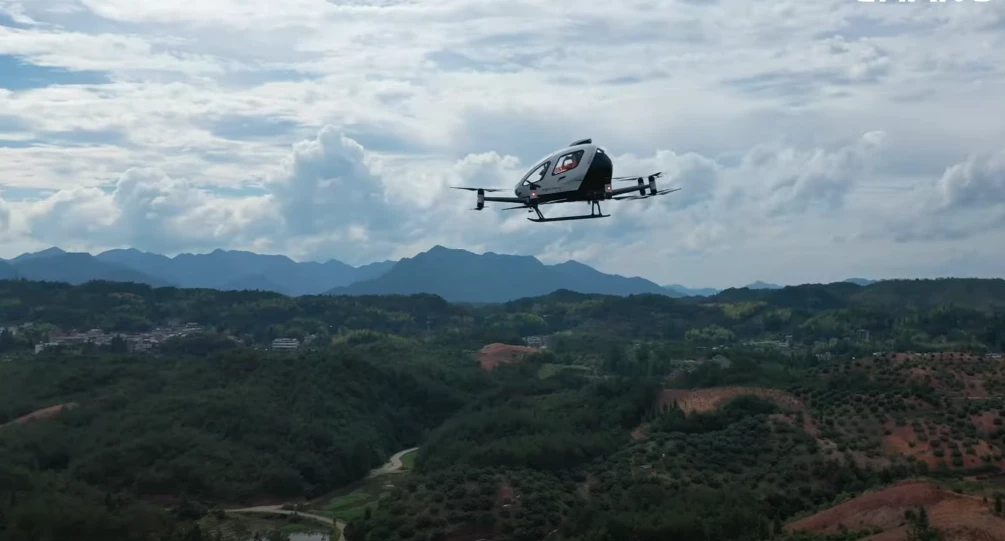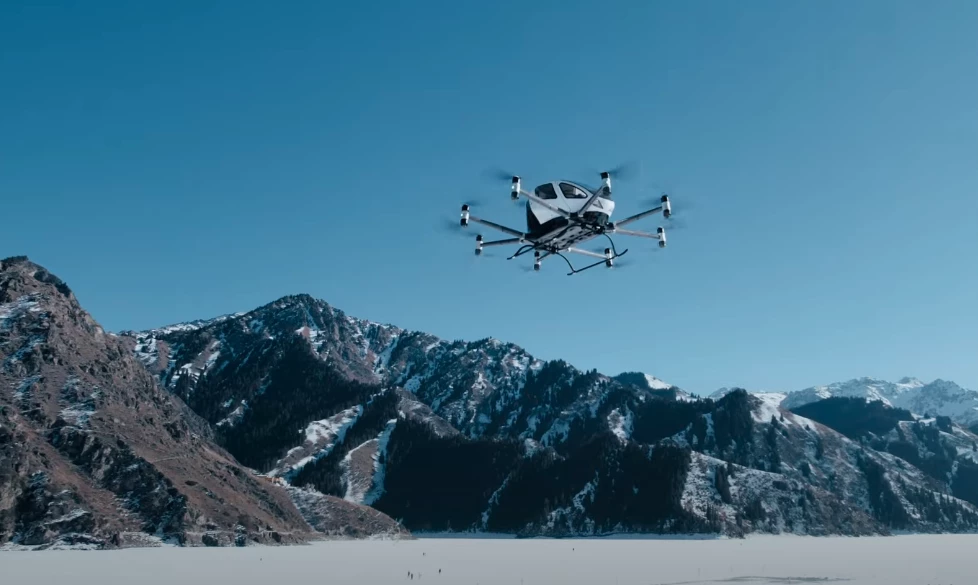Imagine stepping aboard an empty aircraft that looks to have landed straight from the future, strapping in and sitting back while soaring through the air and taking in the scenery, all without so much as a pilot there to encroach upon the privacy of your panoramic bubble. It may sound like a distant reality beyond our lifetimes, but EHang is quite determined to shorten the distance ... by a lot. The Chinese autonomous eVTOL maker recently sent out a couple of flights to demonstrate the bleeding-edge travel alternative that will soon be available in various destinations around China.
EHang completed its latest passenger demos as part of a celebratory event on June 22, allowing multiple people to step inside the pilotless EH216-S and experience short-distance, low-altitude scenic touring. Passengers hovered their way through the abundant mountain and alpine lake scenery surrounding the Baizhangji Fall & Feiyun Lake Scenic Resort in Wencheng, China.

EHang demos are nothing new. The company has been hosting EH216-S passenger trials and test flights for years, including running its very first commercial demonstration flights in Guangzhou and Hefei, China in December 2023, following its world-first type certification.
Last month's demonstration, however, felt a little different because it accompanied the delivery of 27 EH216-S models to the Wencheng government for its low-altitude tourism initiative. A county within the city of Wenzhou in China's Zhejiang Province, Wencheng is working to become an early leader in the fast-emerging low-altitude economy that will see both manned and unmanned craft soaring through the air space below 3,300 feet (1,000 m) to provide transportation, leisure opportunities, commercial goods transport, emergency response, and undoubtedly some services even industry insiders have yet to imagine.
The 27 Wencheng units represent the majority of a 30-unit order, and the county has already put a deposit down for a much larger fleet of 270 EH216-S vessels for delivery by 2026. EHang says the county has paid in full for the initial 30-unit order.

While the lion's share of Wencheng's infrastructure to support EH216-S flights and services remains to be developed, the Baizhangji resort that served as the host of June's delivery event has built a take-off and landing pad, along with supporting amenities. Plans call for similar infrastructure to be added around the county in preparation of the launch of commercial EH216-S aerial sightseeing services.
"This year marks an important beginning of Wencheng's low-altitude economy development," said Zhaozheng Luo, secretary of Wencheng County government, during last month's event. "Wencheng will fully leverage its advantages, including its clean airspace, rich terrain and unique locations, to vigorously develop the low-altitude economy. By innovating with this emerging industry, we will jointly explore new business models with EHang, accelerating the integration ecosystem of low-altitude applications, scenic attractions and the local culture."
Located in the southwest of Wenzhou in eastern China, Wencheng is known for its dizzying waterfalls, lush mountains and gorges, sparkling lakes, and deep forests. It serves as an idyllic backdrop for any style of air tour, particularly one that puts passengers inside a private panoramic glass bubble.
EHang will work with local Wencheng authorities and businesses on further infrastructure development. Plans call for designating several eVTOL aerial sightseeing routes around the county and establishing regular eVTOL operations by the end of 2024. The parties will also explore use cases beyond tourism, such as emergency response and logistics.

Seeing an opportunity to emerge as a global leader in a cutting-edge space, the Chinese federal government has followed up its liberal regulation and certification of the budding eVTOL industry by pushing for investment in the low altitude economy, a market expected to double in size to over a trillion yuan (US$137.5 billion) by 2026.
EHang has been busily working with other governments and businesses across China toward this goal. Most recently, it announced this week the completion of a memorandum of understanding with China Southern Airlines toward the creation of EH216-S demonstration sites and use cases in and around the city of Zhuhai.
The 193-cm-long (76-in) EH216-S relies on eight pairs of coaxially mounted propellers (16 props total) to autonomously fly two passengers up to 30 km (18.6 miles) per charge. It's capable of a top speed of 30 km/h (81 mph). Each vessel travels preset routes using 4G/5G high-speed wireless connectivity to communicate with the command and control center.
Shortly after announcing domestic pricing, EHang announced an EH216-S starting price of US$410,000 for global markets.

In April, EHang received a Production Certificate from the Civil Aviation Administration of China (CAAC), acknowledging that the company meets the authority's requirements for having established a mass production quality management system.
So, we may not have our damn flying cars yet, but we're on the cusp of having human-hauling eVTOL drones zipping around various Chinese cities and travel destinations like so:
Source: EHang




